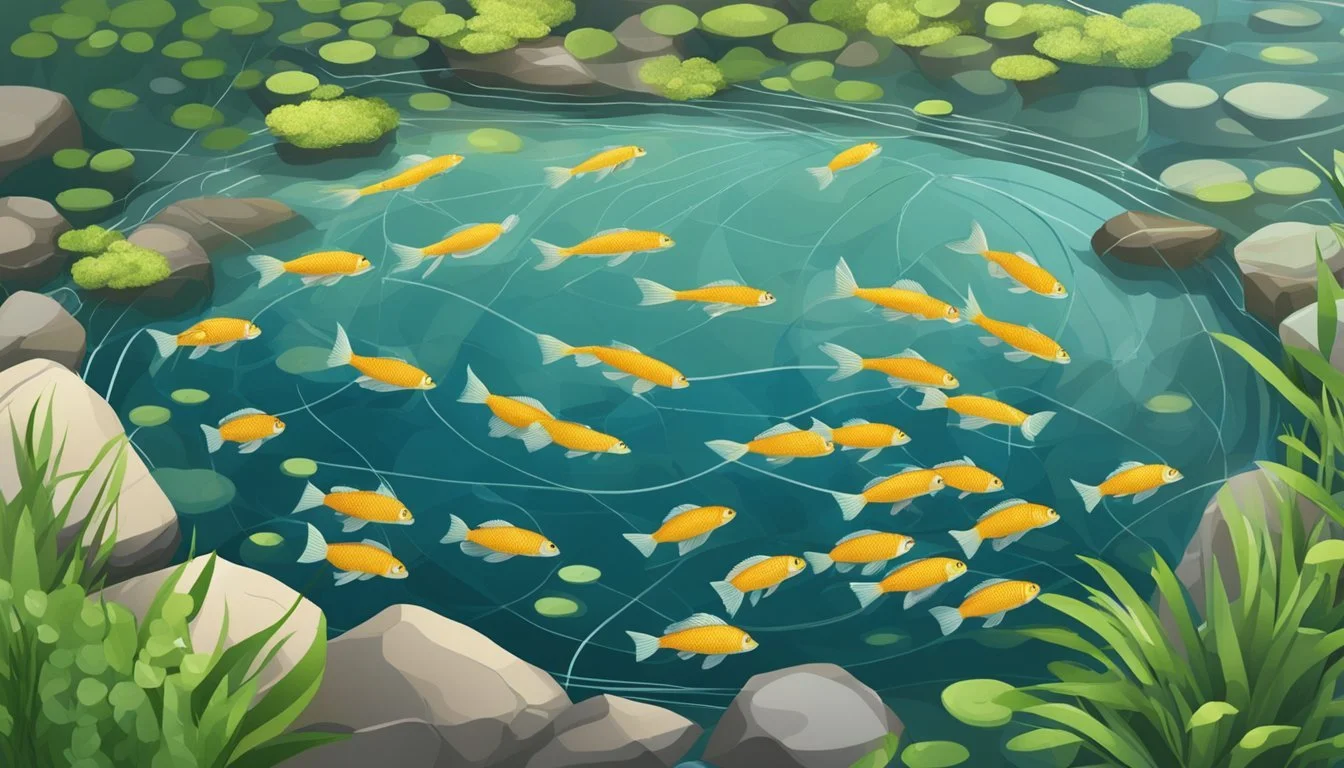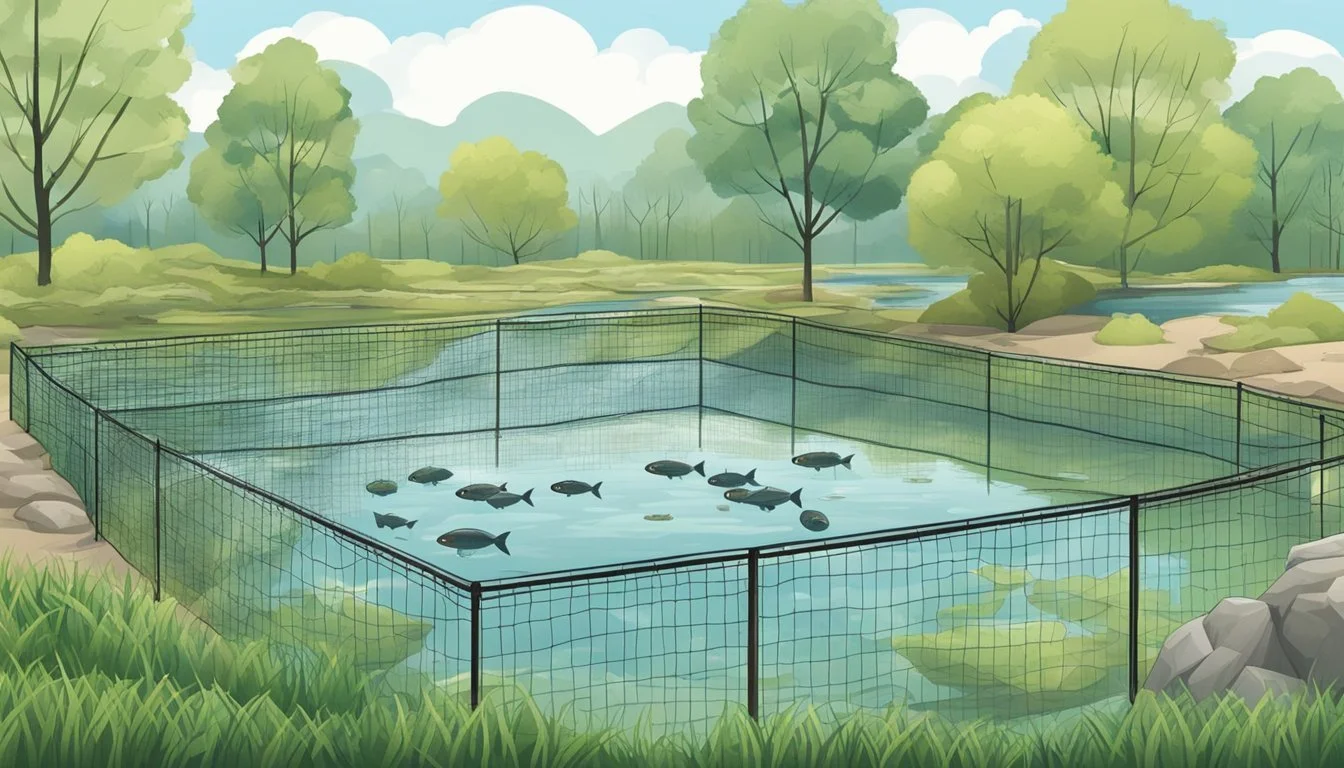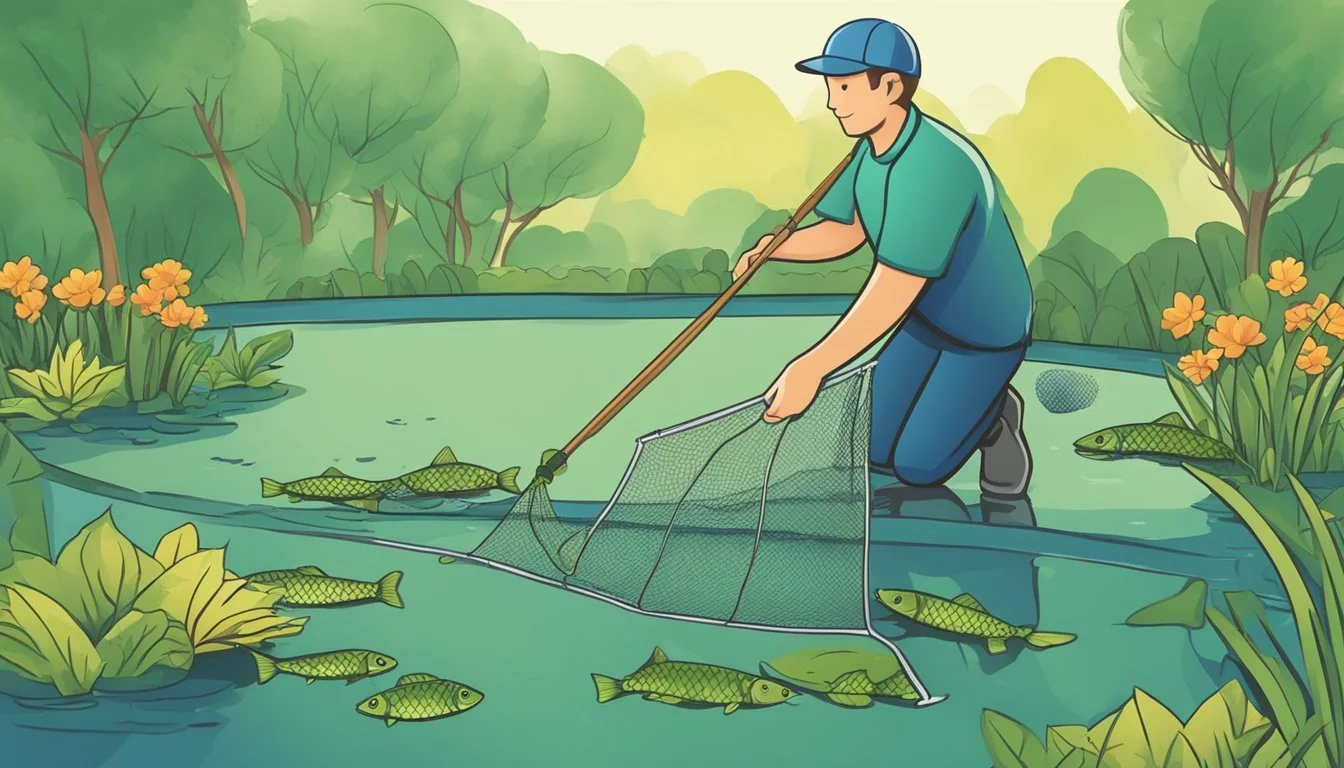The Ultimate Guide to Using Fishnets
Strategies for Optimal Fish Management in Ponds and Tanks
Effective fish management is a vital component of aquaculture and sustainable fishing practices. The use of fishnets plays a crucial role in the maintenance and harvesting of fish within ponds and tanks. These tools allow for selective retrieval and assessment of stock, while minimizing harm to the aquatic environment and the fish themselves. Utilizing the appropriate fishnet type and technique can lead to increased efficiency, which is especially important for commercial operations where time and resources are often limited.
In pond ecosystems, fishnets are not just used for capturing fish; they are also integrated into daily management tasks. They assist in monitoring fish health, population balance, and growth rates. By employing various mesh sizes and shapes, caretakers can target specific species or sizes, thus executing precise management strategies. With a focus on conservation and careful resource management, the use of fishnets embodies a harmonious balance between human intervention and the well-being of aquatic life.
Planning Your Pond
When it comes to establishing a pond, meticulous planning is crucial to create a sustainable aquatic environment for fish management. Key considerations must include site selection, size, depth, water quality, and compliance with regulatory requirements.
Understanding Site Selection and Topography
Choosing the right location for a pond involves evaluating the topography of the land. The Natural Resources Conservation Service can provide guidance on soil types and land formations, ensuring the site supports a pond structurally. It's imperative to select a location with a natural depression to minimize excavation costs. The chosen site should be free from potential contaminants and away from areas prone to flooding or heavy pesticide use.
Designing for Adequate Size and Depth
The intended use of the pond dictates its optimal size and depth. Ponds meant for fish management should have varying depths to cater to different species, typically ranging from shallow areas of 2-3 feet to deeper zones of 10-12 feet. This promotes a healthy living environment for fish and helps regulate water temperature. Adequate depth also discourages weed growth and ensures year-round water coverage.
Determining Water Supply and Quality
The primary water sources for ponds are springs, streams, and surface runoff. Each source contributes differently to the water quality and quantity. It's vital to test water for pH, alkalinity, and pollutants to ensure a healthy habitat for fish. Balancing water chemistry is key to maintaining fish health, making regular testing a part of pond management.
Obtaining Necessary Permits and Approvals
Before pond construction begins, identifying and obtaining all necessary permits and approvals is essential. Regulations vary by region but generally involve ensuring environmental protection and public safety. The process includes outlining the construction plan and its potential impact on natural resources, with agencies scrutinizing the pond's effect on local ecosystems.
Preparing for Emergency Spillway and Water Control Structures
To manage water levels effectively and protect the pond during heavy rainfall, implementing emergency spillways and water control structures is critical. These features prevent breaches and overtopping, which can erode the pond's banks and dam. Emergency spillways should be designed according to the pond's size and the average rainfall of the area, ensuring water is safely diverted away from the structure.
Building the Pond
Constructing a pond requires meticulous planning and execution. The site preparation and pond construction are foundational to the longevity and functionality of the pond. Ensuring proper slope and stable pond banks are critical for maintenance and management.
Executing Site Preparation and Pond Construction
Site preparation begins with selecting an area with good drainage and is distant from trees to avoid root interference with the pond's liner. Excavation follows the site selection—establishing the dimensions of the pond to an optimal depth, often between 3-5 feet for fish farming, which allows for a balanced ecosystem and manageable maintenance.
Key Steps:
Location Selection:
Evaluate for adequate drainage.
Ensure distance from potential root damage sources.
Excavation:
Dig to the desired depth and width, considering local regulations.
Remove any debris that can puncture the liner or harm fish.
Establishing Proper Slope and Pond Banks
The slope of the pond should be gradual to facilitate ease of access and minimize erosion. A slope of approximately 3:1 is optimal for stability. Pond banks are the critical intersections of water and land; they should be reinforced to prevent collapse and ensure the retention of the pond’s shape over time.
Pond Bank Development Guidelines:
Slope Configuration: Maintain a 3:1 ratio for stability.
Reinforcement: Utilize vegetation or engineering solutions to prevent erosion.
Inspection and Maintenance: Regularly check for signs of wear and repair to ensure integrity.
Adhering to these construction principles during the building phase lays the groundwork for a well-managed and sustainable pond ecosystem.
Pond Management Strategies
Successful pond management requires a comprehensive strategy encompassing the establishment of a balanced ecosystem, regular monitoring of water parameters, strategic stocking of fish species, careful predator and prey balance, and the use of fertilization and weed control methods to maintain optimal pond health.
Creating a Balanced Ecosystem with Vegetation and Wildlife
Developing a balanced ecosystem is fundamental for pond health. Aquatic vegetation such as submerged plants provides habitat for fish and macroinvertebrates while contributing to oxygenation and stabilization of the pond. Selective introduction of wildlife and strategic planting fosters a self-sustaining environment.
Monitoring and Regulating Water Clarity and Quality
Water clarity and quality are critical indicators of pond health. Regular monitoring of clarity, pH levels, and chemical composition allows for timely interventions. Control measures may include adjusting feed practices, aeration, and use of chemicals to manage pH.
Stocking the Pond with Suitable Fish Species
Appropriate species selection forms the foundation of a thriving fishery. Species such as catfish, bluegill, and largemouth bass should be chosen based on the pond size and objectives. Diverse fish communities encourage balance and minimize competition for food.
Controlling Predator and Prey Populations
Predator and prey dynamics are essential to manage. Introducing predatory fish can help control overpopulation of certain species and maintain ecological balance. Regular analysis minimizes undue competition and ensures a varied, sustainable fishery.
Implementing Fertilization and Aquatic Weed Control
To promote fish growth and habitat quality, fertilization can be used to support phytoplankton blooms, the base of the food chain. Conversely, aquatic weed control, especially for species like filamentous algae, is crucial. Manual removal or herbicide application are common methods.
Managing Fish Populations Through Harvesting and Surveys
Effective management involves measures such as selective harvesting to control population density and using surveys to assess fish population health. Techniques like electrofishing provide valuable data for informed decision-making, ensuring the long-term success of the pond ecosystem.
Advanced Pond Management Techniques
To achieve optimal fish production and maintain a healthy aquatic ecosystem, pond owners need to implement advanced management techniques, focusing on monitoring fish growth and population dynamics, enhancing pond productivity, and preventing fish health issues.
Navigating Fish Growth and Density Dynamics
For successful pond management, it's crucial to comprehend the relationship between fish growth and pond density. The fish size and growth rates are directly influenced by the population density within the pond. Pond owners should strive for a balance where fish have ample room to grow, yet retain a high enough density to maximize fish production. Regular assessments of fish growth patterns and population density provide data needed to make informed decisions regarding stocking and harvest levels.
Utilizing Fish Population Data with Electrofishing
Electrofishing is a sophisticated method to survey fish populations, offering pond managers an insight into fish species composition, density, and size distribution. Pond owners and fisheries professionals can use electrofishing as a tool to collect population data accurately, which aids in making decisions on harvest rates and assessing the success of stocking strategies. This data is pivotal to ensure fish population structures are optimized for both fish health and pond productivity.
Managing Natural and Supplemental Food Sources
A well-managed pond supplies a range of food sources, from natural resources like zooplankton to supplemental feeding programs. To bolster pond productivity, pond maintenance practices should include managing these food sources by:
Sustaining natural food supply through habitat enhancement, such as aquatic vegetation control and sediment management.
Implementing supplemental feeding, where required, to improve nutrition and growth, particularly in intensively managed fish ponds.
Strategies to Prevent Fish Kills and Disease
Preventing fish kills and disease within a pond is imperative for the long-term health of the fish populations. Key strategies include:
Water Quality Management: Regular monitoring and maintenance of water quality parameters like oxygen levels, temperature, and pH to prevent fish kills.
Disease Prevention: Implementing biosecurity measures, such as quarantine for new stock and routine health checks.
The intervention of grass carp for vegetation control, guidance from the Natural Resources Conservation Service (NRCS) on pond construction, and proper management practices play a crucial role in maintaining the equilibrium necessary to keep a pond's ecosystem thriving and resilient to disease and environmental stressors.
Troubleshooting Common Pond Issues
Effective pond maintenance is crucial for preventing and resolving issues such as stunted bass growth in overcrowded environments and combating algae overgrowth that impairs water clarity. Here, the emphasis is on specific strategies to manage bass population and algae, ensuring a healthy and clear pond ecosystem.
Addressing Stunted Growth in Bass-Crowded Ponds
In bass-crowded ponds, stunted growth often becomes apparent due to insufficient resources and excessive competition. Pond managers can implement a selective harvest strategy to remove smaller or poor-performing bass to reduce competition. Fishnets play a critical role in this process by allowing the specific targeting and removal of certain sizes of fish.
Selective Harvest Protocol:
Assess the population: Utilize fishnets for sampling the pond.
Determine targets: Identify bass sizes appropriate for removal.
Remove competitors: Use fishnets to selectively harvest stunted bass.
By managing the bass population, resources such as food and space become more available, promoting the growth of the remaining bass.
Handling Algae Overgrowth and Water Clarity Problems
Algae overgrowth, particularly filamentous algae, leads to water clarity issues in fish ponds. Consistent pond maintenance is necessary to control this type of algae. Mechanically removing algae with fishnets or similar tools can provide immediate, albeit temporary, relief.
For sustainable control, it’s recommended to:
Utilize aeration to improve water quality and discourage algae growth.
Employ algaecides cautiously, following label directions to avoid harming fish or beneficial plant life.
Maintain a balance of aquatic plants that compete with algae for nutrients.
Regular inspections and cleaning routines are vital for maintaining water clarity and ecosystem health. Fishnets assist in the removal of debris and dead algae, preventing decay processes that can further degrade water quality.
Enhancing Recreational Use and Fishing
To optimize fishing ponds for recreation, focus on design considerations that cater to anglers and ensure a thriving ecosystem for game fish like largemouth bass.
Design Tips for Fishing Ponds
Depth Variation: Create a pond with varying depths, allowing for diverse fish habitats. Shallow areas serve for spawning while deeper regions provide cooler refuges during hot weather.
Shoreline Features: Include features such as submerged structures and gentle slopes along the shoreline to make access easier for anglers and to enhance fish populations.
Maintaining a Healthy Habitat for Largemouth Bass and Other Fish
Vegetation Management: Strike a balance between providing ample cover for fish and preventing overgrowth that degrades water quality. Use aquatic plants that oxygenate the water and create natural cover.
Stocking and Population Control: Regularly monitor and manage fish populations to prevent overstocking, which can stress the ecosystem and diminish the growth of largemouth bass and other species.
Conclusion
Effective use of fishnets in pond management considerably enhances the success rates in both fish rearing and harvesting. They serve as vital tools for maintaining healthy fish populations and facilitating successful reproduction cycles. Key components in the utilization of fishnets include:
Routine Inspection: Regular checks ensure fishnets are intact and functioning optimally.
Selection of Proper Mesh Size: This is critical to protect juvenile fish and maintain desired species in the pond.
Cleanliness: Nets should be kept free from debris to prevent diseases and ensure effective water flow.
It is essential for pond keepers to integrate fishnets as part of their comprehensive management strategy to attain the balance between a thriving ecosystem and productive fisheries.
Component: Routine Inspection, Importance in Pond Management: Assures functionality of fishnets
Component: Proper Mesh Size, Importance in Pond Management: Protects juvenile fish
Component: Cleanliness, Importance in Pond Management: Prevents disease, ensures flow
Ultimately, the strategic use of fishnets contributes to a sustainable and prosperous fish pond. It allows pond managers to oversee and control the environment proactively, leading to robust fish populations and higher quality harvests.






